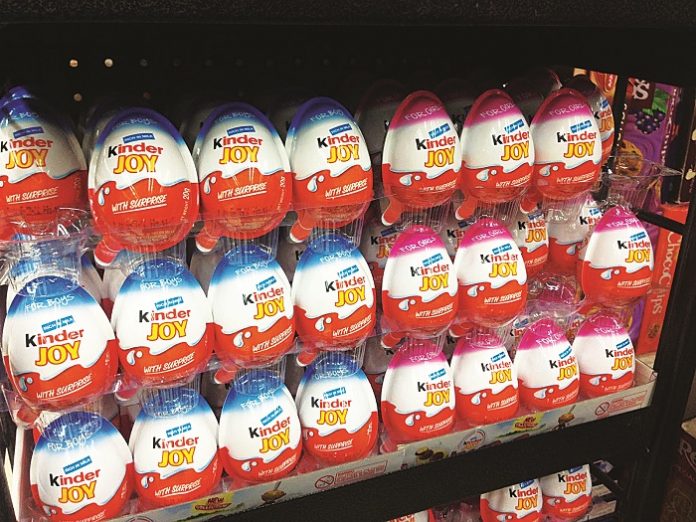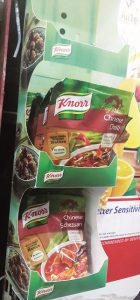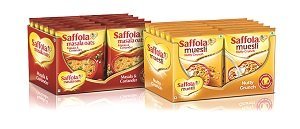
Today’s designer must accommodate the often-conflicting demands of cost control and supply chain logistics and also retain freshness and creativity to make packaging stand out uniquely enough to have the shelf impact that attracts the attention of the consumer. “Not only must it look great,” demands the brand owner, “but also it must have minimum possible cost implications on the supply chain logistics.” Deepak Manchanda reports.
Modern packaging – as the term implies – has many sides. Traditionally the marketing side (function) played the most significant role and governed the process of creative design, on-pack communication and appearance of the package that would go to the market. Gradually, due to statutory issues, materials and technology progress and the appearance of organized retailers, many more sides have been added to the packaging design decision-making process. The Legal side governs the information and declarations that must perforce appear on the packaging. The Manufacturing side determines the selection of materials and equipment on which the packaging is made. The Retailing side decides how the packaging will be displayed and how the customer will experience it at the point-of-sale. In this process the challenges for the packaging designer have become tremendous.
The designer must not only accommodate the (often conflicting) demands on the packaging being designed but also retain freshness and creativity to make it stand out uniquely enough to attract the attention of the consumer. “Not only must it look great,” demands the brand owner, “but also it must have minimum possible cost implications on the supply chain logistics.”

and lingual borders has
become the new language of integrated supply chains
‘Integration’ is the new buzz word in packaging design. The packaging and logistics functions are merging. As Alex Stark, VP marketing, www.kaneisable. com, writes, “Packaging decisions that don’t consider the downstream supply chain logistics costs – can drain profits.” Consumer product companies have started involving specialist Third Party Logistics (3PL) companies in the packaging decision making process to influence packaging decisions and even take over the entire secondary packaging operations. Welcome to the new Integrated Supply Chain. Packaging is no longer the discreet function and domain of the marketing function that it used to be.
“A package may look great,” the 3PL companies are asking, “but what is it going to cost to produce and distribute competitively?” Sriman Banerjee, head of packaging development. Glaxo Smith Kline, Parsippanny, NJ quoted in Packworld puts it succinctly. “Packaging supply chain efficiency (today),” he says, “must be a judicious mix of engineering, material science, standardization and logistics.” Notice here how the conventional understanding of ‘design’ in terms of 3D form, graphic art, communication, print and consumer convenience is missing from the wish-list.
So, what exactly are these new paradigms that the pack designer must aim to satisfy? Taken broadly from the prescriptions set-out by the 3PL specialists like Kane or leading packaging developers like Banerjee in GSK, it has become mandatory for packaging decision makers to consider the following current trends:
Packaging reduction: To use the least possible amount of material needed to effectively store, transport, display and sell a product. A typical example is to compare packaging of RTD beverages in stand-up spout pouches instead of rigid cartons or bottles. It saves transport volume and weight and adds the least to land fills. In the words of Kane, “it is a clear example of where interests of marketing, supply chain and sustainability intersect.” It is often referred to as ‘optimization’ and down-gauging, light-weighting, re-sizing and value analysis are its objectives – without losing out on ‘size impression’ or ‘customer perception. ’As Banerjee correctly points out, “Computer simulation and Finite Element Analysis are the tools that will be increasingly called for going forward.”
More automation: End-of-line packaging operations need to be managed with the least amount of labour and an ability to ‘crank out millions of cases’ based on demand volatility. As Banerjee points out, “Your upstream operations may be capable of being speeded up but what use would that be if the downstream, endof-line is bottle-necked and limits your output capacity.” Automation options to overcome such constraints include machines such as case-erectors, case packers, tapers and stretch wrappers.
Flexibility to configure case pack requirements customized to end-user needs (or even individual customer needs as required by eTailers) is in demand. Technology solutions are needed to substitute labour in order to ensure flexibility and reliability. All this necessarily imposes the need for more standardization in packaging choices.
Source integration: Reducing the supply links for packaging raw materials, procurement and inventory add up to a streamlined packaging supply chain. This can mean integrating sourcing of packaging components from fewer – but more efficient – suppliers. Ideally it should also mean integration of packaging and logistics such that primary packaging also serves as secondary packaging and thus produces major savings. The emergence of ‘retail-ready; shelf-ready; display-ready’ secondary packaging is an example of this impulse. Unfortunately, on the other side of this is the example of eTailing where the nature of operations demands additional layers of wasteful secondary packaging to be added to cater
to individual orders.
 Warehousing and freight infrastructure: Lack of quality warehouses or transport and roadways infrastructure is a serious impediment to reducing packaging costs. Poor handling, improper storage conditions and damaged roads and vehicles cause packaging to be over specified. In addition, the need for end-toend supply chain visibility has emerged as a critical aspect of warehouse organization. Manufacturers and retailers need to develop and implement a reliable system that will allow for ‘pickers’(warehouse staff) tosuccessfully and quickly sort through a large number of products, easily identify products in the wrong location and maintain continuous stock rotation. By using color labels as an identification tool, warehouse staff would spend less time reading and deciphering information.
Warehousing and freight infrastructure: Lack of quality warehouses or transport and roadways infrastructure is a serious impediment to reducing packaging costs. Poor handling, improper storage conditions and damaged roads and vehicles cause packaging to be over specified. In addition, the need for end-toend supply chain visibility has emerged as a critical aspect of warehouse organization. Manufacturers and retailers need to develop and implement a reliable system that will allow for ‘pickers’(warehouse staff) tosuccessfully and quickly sort through a large number of products, easily identify products in the wrong location and maintain continuous stock rotation. By using color labels as an identification tool, warehouse staff would spend less time reading and deciphering information.
Highlighting critical product, safety or delivery data with color elements and images streamlines identification without the need for additional text. Adding pictures to secondary shipping labels also reduces the need to open boxes in order to identify the product inside. A gradual improvement of warehouse and infrastructure conditions with stress on more mechanized forms of bulk handling – with fork-lifts and pallets – and controlled atmosphere warehouse space would drastically reduce the over consumption of packaging. Naturally, the benefits of such improved infrastructure would not only be reduced packaging costs per
product but deliver a more sustainable packaging solution in terms of less material to land fills as well as a reduced carbon footprint.
Supply chain optimizers

The aim of being able to leverage the supply chain via packaging has led to the arrival of not just 3PL specialists but also 4PLs – that is, specialists who not only provide expert logistics support but help to optimize the packaging too. These groups work not only on ‘network optimization’ but suggest ways and means based on the above listed principles to improve ease-of-handling (or stowability), reduce susceptibility to damage and increase density (of shipping volume).
All this of course is a result of the continuous pressure on manufacturers to escalate production efficiency in order to improve customer service. Large retailers are demanding faster shipping to stores or, as in the case of eTailers, faster home deliveries and personalized products. The result is that the role of warehouses and distribution centers has expanded well beyond the traditional product fulfillment function. The level of consumer engagement can be tested at these distribution centers by gauging market demand patterns and testing new campaigns and product launches.
A key element of all this frantic effort at the distribution end therefore is the need for more efficient product identification tools. An effective way to increase efficiency in such environments is the use of unique marking and on-demand color labeling. Color coding and marking that can work across geographical and lingual borders has become the new language of integrated supply chains.
New packaging that does not stay on shelves but moves faster across smart supply chains is here. On your marks, get set and ship.











